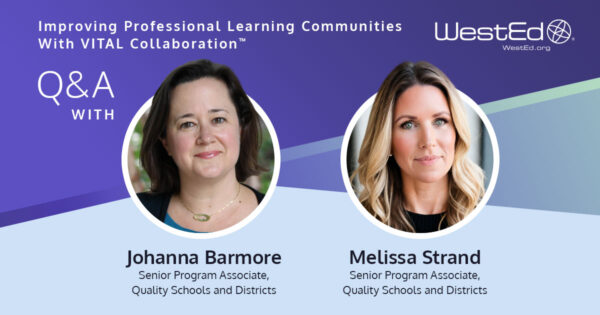
July 2, 2025
By Casey McAlduff and Lyn Westergard
The teacher shortage crisis in the United States is a significant challenge, with nearly 407,000 positions either vacant or filled by educators lacking full certification, according to a 2024 Learning Policy Institute report. These vacancies negatively affect vulnerable student populations, including Multilingual Learners.
According to a recent study by the Regional Educational Laboratory Northwest, districts must create working conditions to improve teacher retention by offering robust professional development. One way to address the shortage of certified teachers—while ensuring that Multilingual Learners aren’t left behind—is to design and implement in-house English as a Second Language (ESL) certification programs.
Across the country, educators are looking for access to high-quality instructional practices and more robust support, such as protected time to develop shared practices and exchange ideas with colleagues. Localized ESL certification pathways have the potential to provide this support, bolstering the development of teacher expertise in a context that is meaningful and relevant and that situates teachers’ learning within their classrooms.
By responding to the needs of teachers and providing educators the time and space to collaborate with their colleagues and to problem-solve around the challenges that their students face each day, in-house ESL certification programs offer a desirable professional learning pathway for educators and an opportunity for districts to increase their population of qualified teachers of Multilingual Learners.
Designing an In-House ESL Certification Program
Through WestEd’s partnership with large school districts such as Reading School District in Reading, PA, we’ve developed initial guidance for districts who may be interested in designing their own in-house ESL certification program:
- Assess Your District’s Needs: Begin by assessing the quality of current ESL certification programs available for educators in your district. Are teachers participating? Are the programs improving outcomes for Multilingual Learners? Do teachers feel equipped to better serve their students? Understanding the gaps in existing programs is the first step toward designing a more effective solution.
- Explore Alternative Certification Pathways: Contact your state’s department of education to learn about alternative provider applications. As our partners in Reading School District discovered, you may not have to be a university to offer an ESL certification program. Explore partnerships with local universities and organizations to design a program that is relevant to your district’s needs and meets your state’s requirements.
- Visit Other Districts for Inspiration: Visit districts in your state or in neighboring states that have implemented alternative certification models. Learning from districts like Pittsburgh, whose use of Pennsylvania’s alternative certification pathway inspired our partners in Reading, can provide invaluable insight into how to navigate the application process and design a program that fits your context.
- Engage Educators, Students, and Families: Establish a communication plan to engage all relevant interest holders, including teachers, students, families, school staff, administrators, and community members, in order to better understand their needs related to program design and ultimate outcomes.
- Secure Funding and Support: Identify potential funding sources to support the development and implementation of the program. For example, smaller districts can partner with surrounding districts to consider creating a regionalized program. Additionally, ensure you have administrative support and buy-in from key interest holders to sustain the program long term.
- Partner With Experts for Program Design: Collaborate with an external partner, such as WestEd, to codesign a high-quality, localized certification program that supports teachers in developing their expertise, with the goal of increasing quality learning opportunities for all students.
The current teacher shortage can be mitigated through sustainable solutions and powerful partnerships that center a future in which both students and teachers have access to high-quality educational experiences that position them for success.
For more information about how to partner with WestEd to design a situated and sustainable ESL certification program for educators in your district, please contact Sharon Sáez, Senior Partnership Development Director at WestEd.










